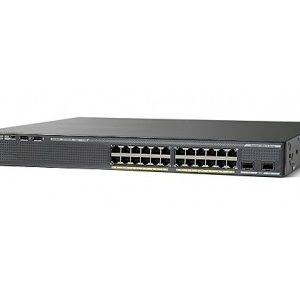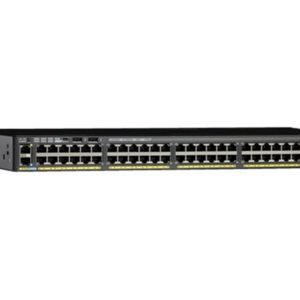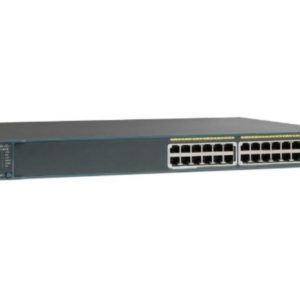Description
Nexus 9200 with 48p 10/25 Gbps and 18p 100G QSFP28
Quick Specs.
| Product Code | N9K-C92300YC |
| Ports | 48 x 10- and 25-Gbps SFP+ and 18 100-Gbps ports |
| Supported speeds | 1, 10, and 25 Gbps on SFP+ ports
40, 100 Gbps on QSFP ports |
| Port configuration | 48 x 10/25-Gbps ports for downlinks; 100-Gbps for the uplinks |
| Physical dimensions (H x W x D) |
2.00 x 17.2 x 22.3 in. (5.08 x 43.8 x 56.6 cm) |
| Weight | 18.6 lb (8.4 kg) (without power supplies or fans) |
Product Details
The Cisco Nexus 9200 platform provides the following features and benefits:
● High performance and scalability
◦ The platform provides wire-rate Layer 2 and 3 switching on all ports with up to 7.2 Tbps and over 5.35 bpps of bandwidth.
◦ With up to 30 MB of shared buffer, the platform is an excellent choice for scalable data centers and big data applications. The ability to fine tune buffer allocation for non-drop queues makes the Nexus 9200 an ideal platform for IP storage designs.
● Virtual Extensible LAN (VXLAN)
◦ The platform offers native line-rate VXLAN routing.
◦ The Border Gateway Protocol (BGP) Ethernet Virtual Private Network (EVPN) control plane provides scalable multitenancy and host mobility (refer to VXLAN Network with MP-BGP EVPN Control Plane for more information).
● Hardware and software high availability
◦ The 64-way Equal-Cost Multipath (ECMP) routing enables the use of Layer 3 fat-tree designs. This feature helps organizations prevent network bottlenecks, increase resiliency, and add capacity with little network disruption.
◦ Patching ensures undisruptive upgrade in most cases.
◦ The switches use hot-swappable Power-Supply Units (PSUs) and fans with N+1 redundancy.
● Purpose-built NX-OS operating system with comprehensive, proven innovations
◦ Open programmability supports built-in DevOps automation tools such as Puppet, Chef, and Ansible.
◦ Cisco NX-API supports a common programmatic approach across Cisco Nexus switches.
◦ Power-on autoprovisioning (POAP) enables touchless bootup and configuration of the switch, drastically reducing provisioning time.
◦ The onboard Python scripting engine enables automation and remote operations in the data center.
◦ Advanced buffer monitoring reports real-time buffer utilization per port and per queue, which allows organizations to monitor traffic bursts and application traffic patterns.
◦ Complete Layer 3 unicast and multicast routing protocol suites are supported, including BGP, Open Shortest Path First (OSPF), Enhanced Interior Gateway Routing Protocol (EIGRP), Routing Information Protocol Version 2 (RIPv2), Protocol Independent Multicast Sparse Mode (PIM-SM), Source-Specific Multicast (SSM), and Multicast Source Discovery Protocol (MSDP).
◦ Segment routing allows the network to forward Multiprotocol Label Switching (MPLS) packets and perform traffic engineering without Resource Reservation Protocol (RSVP) Traffic Engineering (TE). It provides a control-plane alternative for increased network scalability and virtualization.






